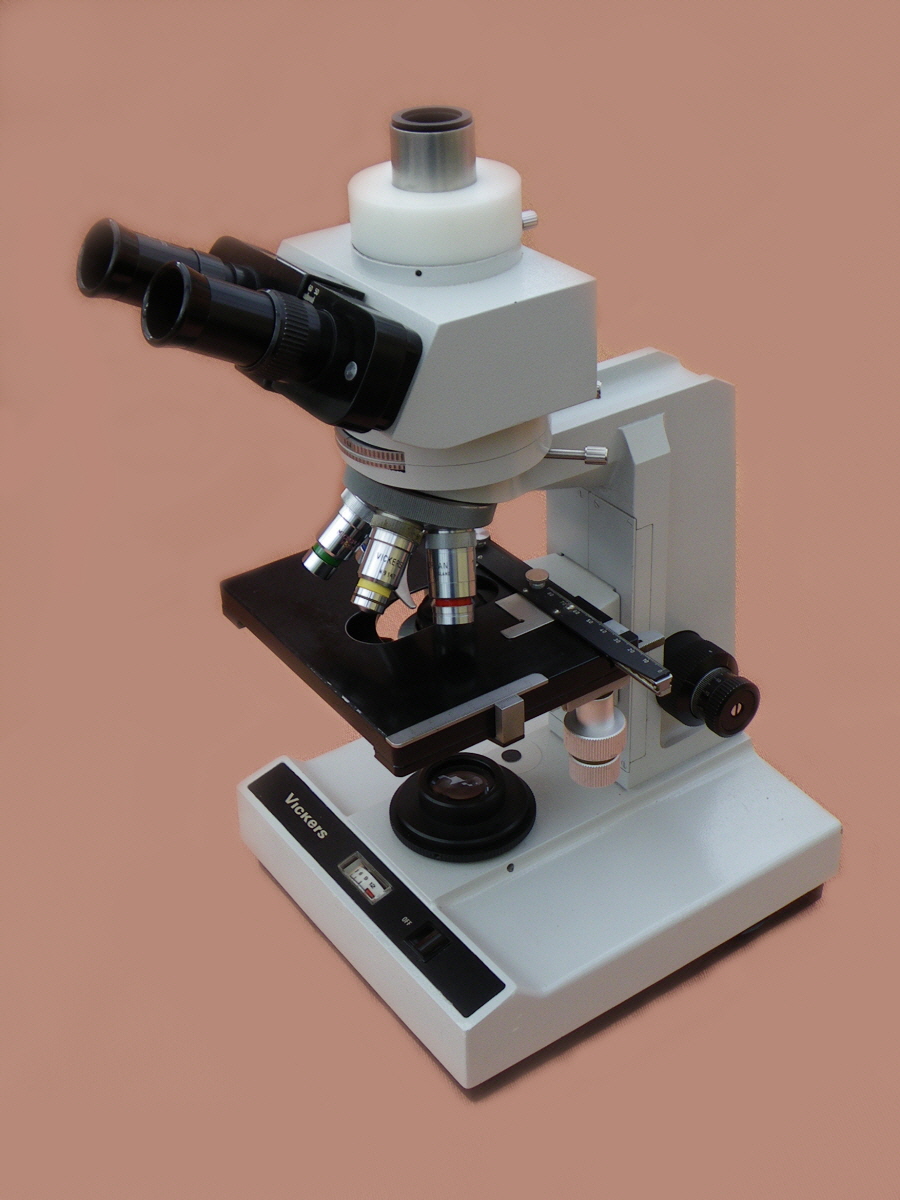
Laboratory transmitted model
|
The Vickers M75 Microscope David Harries, UK |
This article provides some background to an infrequently seen model - the Vickers M75 - perhaps the last laboratory microscope actually designed and manufactured by Vickers Instruments Limited of York.
The M75 was launched in 1980 as a replacement for the long standing, reliable and much-loved M15. According to Munro (ref: 1) the M75 was developed from the M17, “.....a fine range....first marketed in 1976”
It was supplied in a transmitted light configuration as the M75 laboratory and teaching microscope equipped with a 12 volt, 20 watt, quartz halogen lamp mounted in the base - a similar layout to the laboratory version of the M17 and some late-model variants of the M15C.
An incident light version was sold as the M75 metallurgical microscope. This incorporated a demountable reflected light illuminator with provision for brightfield and darkfield operation. The light source is again a 12 volt, 20 watt, quartz halogen lamp with power drawn through a cable from a socket at the rear of the stand.
The laboratory model illustrated here is fitted with a trinocular head of a similar pattern to that used on the M17 and late-model M41 microscopes. The right hand eyepiece tube is fitted with a correction collar, and the head has automatic compensation for tube length when adjusting the eyepiece separation.
The head incorporates a slider control to divert 100% of the light to either the eyepieces or camera port. In the model I have, the camera attachment was missing so I had an adapter machined from Delrin plastic. This can accommodate a purpose-built digital eyepiece camera (I use a Tucsen 3.0 MP) or, alternatively, accept a Vickers eyepiece and a home-made mount for a consumer digital camera. This latter option ensures that chromatic aberrations are properly corrected as the Vickers optical system depends on a correction in both the objective and eyepiece. The adapter incorporates an adjustable sleeve which is locked at a position which ensures the camera optical train is parfocal with the eyepieces for best image quality and convenience when focussing.

Laboratory transmitted model
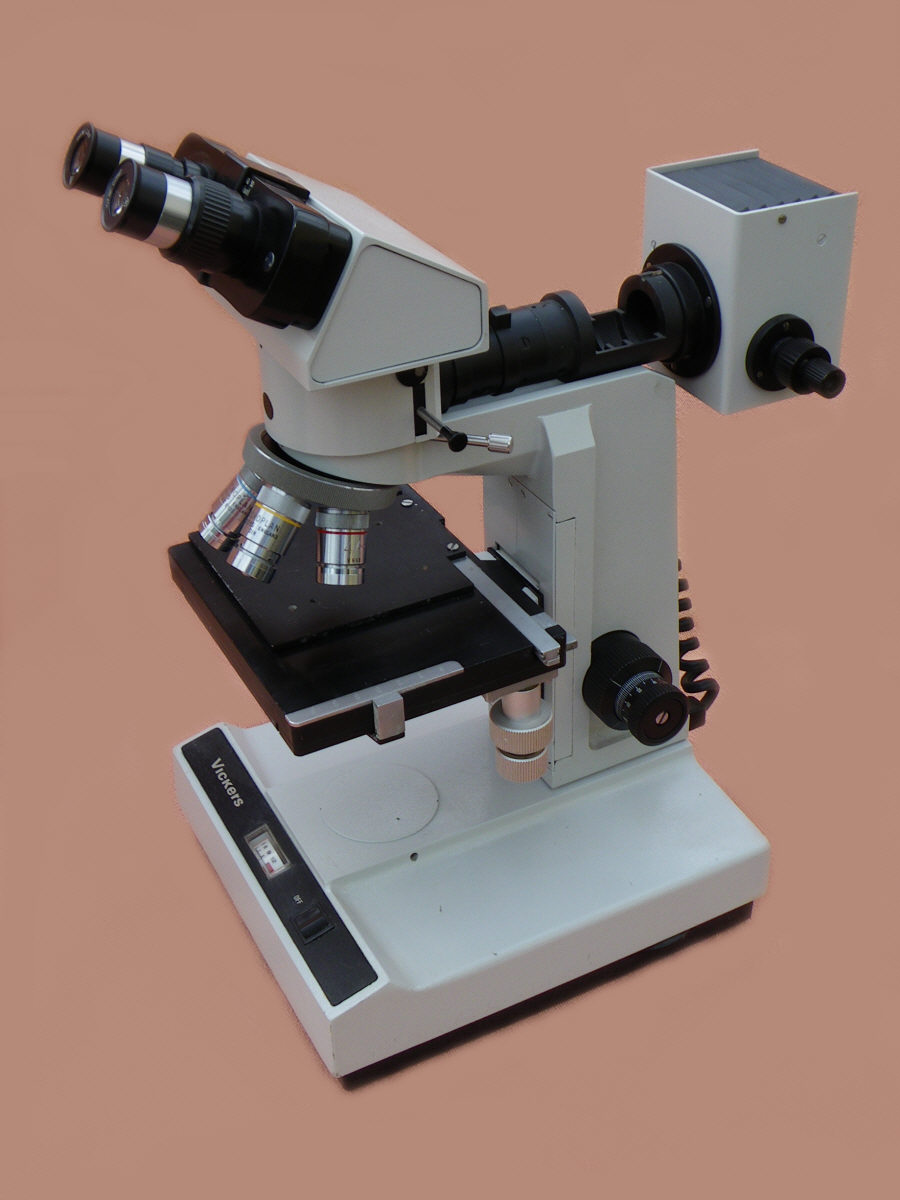
Metallurgical model
Components
Apart from the stand and lamp assembly many of the components are identical, or at least similar, to those used on other Vickers microscopes - particularly the M15 and M17.
The optics were supplied to the DIN standard which had been adopted for all Vickers laboratory microscopes by this time. In practice the earlier pre-DIN Microplan series of objectives, coupled with a pair of Complan eyepieces, work perfectly well and are more readily available. The microscope was designed to 160 mm. tube-length.
The five-place objective changer differs from the M17 assembly in that it is not de-mountable and does not allow for individual adjustment of the objectives. It thus has more in common with the four-place objective changer fitted to the the M15.
The stage height controls and sub-stage condenser are similar to those used on the M15, and the condensers are readily interchangeable. The stage is of a similar style to that used on the M17 with low level coaxial controls for adjustment of the sample X and Y position. The field condenser is specific to the M75 and is equipped with an adjustable iris.
The quartz halogen lamps are easily accessible. The transmitted light model has a tight push-fit lamp holder which slides out from the side of the microscope base to enable lamp replacement. There is no adjustment, so care needs to be taken when replacing with currently available halogen capsule lamps as they may not align as well as the original. I found it was necessary to clip a millimetre off the lamp connections of one brand to ensure a good fit. An alternative option is a quartz halogen xenon lamp which runs cooler and offers a longer life with 8,000 hours claimed compared with 2,000 for a conventional quartz halogen lamp [typical brand: Pro-Lite M47 Ultra]. In common with the trend from other manufacturers at the time the absence of lamp adjustment, and the incorporation of a heat filter/light diffuser disc in the optical train, means that true Kohler illumination is not available in the transmitted light configuration of the M75.
The reflected light illuminator has a fully adjustable lamp with no diffuser. An image of the lamp filament can be observed on a window at the front to the illuminator head to facilitate precise positioning of the lamp.
The lamp voltage is controlled by a rotary control on the right hand side of the base, with voltage displayed on a meter on the front panel alongside an on/off switch.
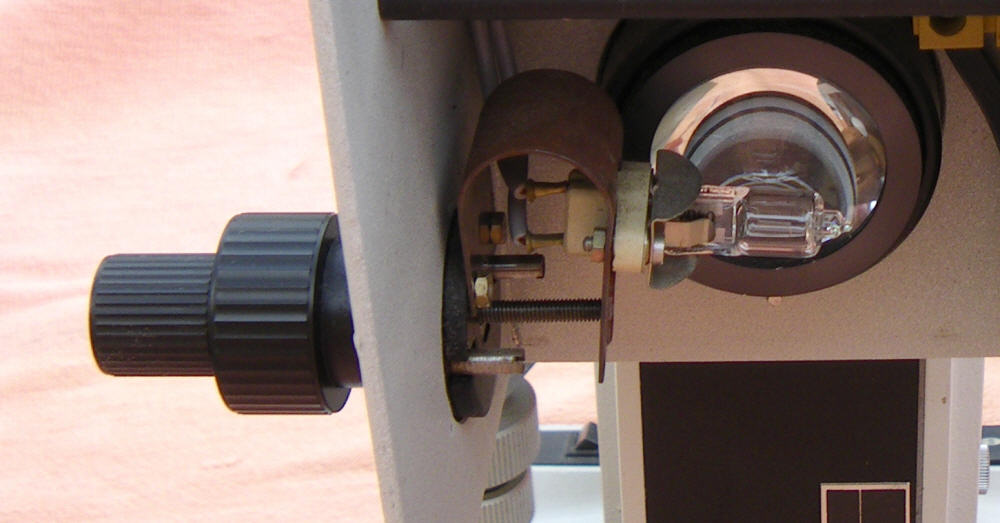
Incident lamp holder
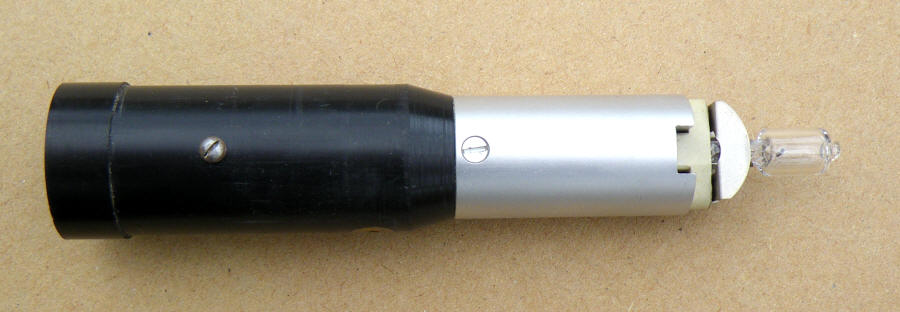
Transmitted lamp holder
Accessories
The microscope was offered with a range of accessories including phase contrast and dark ground illumination condensers, a drawing attachment, and various metallurgical options. Configurations suitable for polarizing work and photomicrography were also sold.
One particularly useful component is the magnification changer which was originally designed for the M17. This has four positions which provide magnification factors of x1, x1.25 and x1.6 and a Bertrand lens.
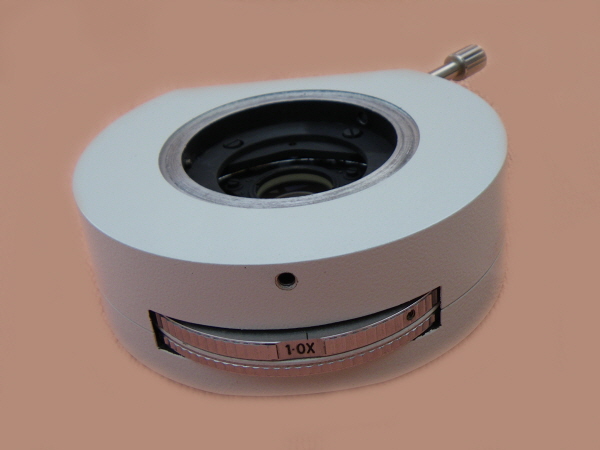
Magnification changer
Availability and cost
Although designed as an affordable laboratory instrument, which was marketed at a lower price than the more highly specified M17, it seems that the M75 was manufactured for only three or four years. The 1982 price list for the M75 shows that a laboratory/teaching model, made up of a stand, binocular head with x10 compensating eyepieces, the 1.25 NA achromatic condenser and five Microplan objectives, would have set you back just over £2,300 (plus VAT), rising to nearly £2,600 if the trinocular head and Complan eyepieces were specified. The addition of a magnification changer, phase condenser and three phase objectives would add a further £1,500.
McConnell (ref. 2) records that by 1983 Vickers decided to “...reduce its range....” of optical microscopes and direct attention to “.....highly sophisticated scientific and defence instrumentation”. At some stage, Vickers started importing Vickers-badged compound microscopes from Japan. Designated as ML1300 and ML3000 they look similar to Meiji Instruments of the same period. Perhaps this was a prelude to the eventual demise of Vickers Instruments as a microscope manufacturer and its subsequent sale to Bio-Rad Laboratories in 1988.
Today, used M75 models occasionally appear on eBay and microscope dealers’ lists with prices usually pitched a little lower than the better known M17. Recent prices have ranged from about £300 to £600 depending on the condition of the instrument.
In use: a solid and dependable microscope of modern appearance with many Vickers spares readily available through eBay or specialist microscope dealers. My experience is that the smooth, well-controlled, focussing and stage adjustments mounted on a robust stand make it a pleasure to use. Bracegirdle, in his series of articles on exhibits at the Science Museum (ref. 3), refers to the M75 as: “....a well developed model, working well at the bench”.
Comments to the author are welcomed.
References and sources of further information
1. Munro A. J.: A History of Vickers Instruments’ Microscopes, Quekett Journal of Microscopy, Vol. 34 (1980).
2. McConnell, A.: Instrument makers to the world, University of York (1992).
3. Bracegirdle B.: Microscopy at the Science Museum: 5, Quekett Journal of Microscopy, Vol. 40 (2005).
4. Further information: Vickers Archives - Borthwick Institute, University of York.
Microscopy UK Front
Page
Micscape
Magazine
Article
Library
Please report any Web problems or offer general comments to the Micscape Editor .
Micscape is the on-line monthly magazine of the Microscopy UK website at Microscopy-UK .